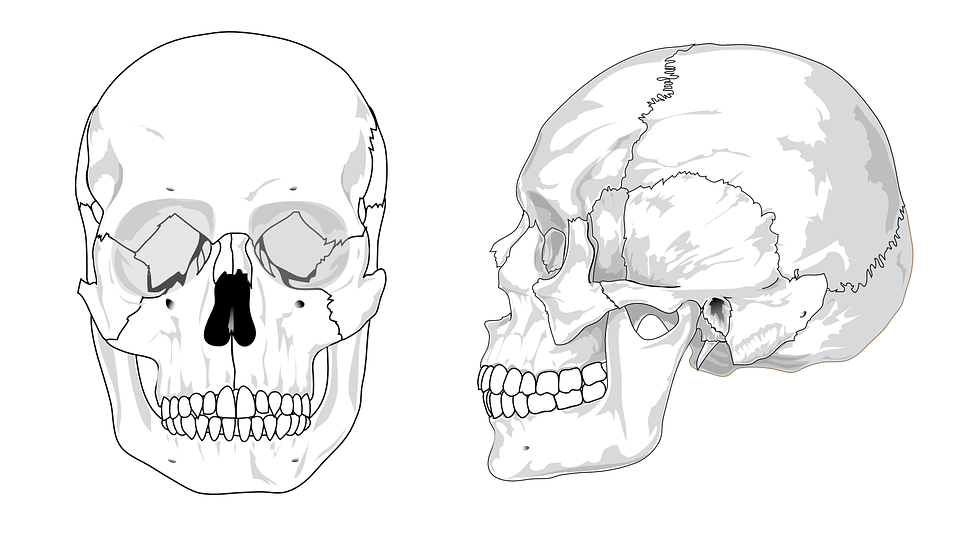Symptoms of craniosynostosis
Craniosynostosis causes an irregular skull shape. The baby’s skull shape is determined by the type of craniosynostosis they have.
A baby’s skull consists of seven plates of bone connected by strong elastic tissues called sutures. The sutures give the bone plates flexibility so the skull can grow along with the brain.
Other signs of craniosynostosis can include:
a hard ridge developing along the sutures
the soft spot (fontanelle) on your baby’s head disappearing or feeling different
your baby’s head not growing in proportion with the rest of their body
an increase in pressure within the baby’s skull or raised intracranial pressure (ICP)
In some cases, craniosynostosis may not be noticeable until a few months after birth.
Intracranial pressure (ICP)
Raised intracranial pressure (ICP) is a symptom that may occur in all types of craniosynostosis. ICP increases when pressure builds up inside your child’s skull because of its irregular shape.
When only one suture is involved, raised ICP occurs in less than 15% of children. However, in syndromic craniosynostosis where multiple sutures are involved, raised ICP is more common and may occur in up to 60% of cases.
If your child has mild craniosynostosis, it may not be spotted until they begin to experience problems because of an increase in ICP. This usually occurs when a child is between four and eight years old.
The symptoms of ICP usually begin with:
a persistent headache – usually worse in the morning and last thing at night
vision problems – such as double vision, blurred vision, or a “greying out” of vision
an unexplained decline in the child’s academic abilities
If your child complains of any of the above symptoms, take them to see your GP as soon as possible. In most cases, these symptoms will not be caused by raised ICP, but they do require further investigation.
Left untreated, other symptoms of raised ICP can include:
vomiting
irritability
sluggishness and unresponsiveness
swollen eyes or difficulty following a moving object
hearing difficulties
breathing difficulties
Types of craniosynostosis
There are several types of craniosynostosis, depending on which sutures are affected. Different sutures being affected can lead to a different shaped skull.
These are described below.
Sagittal synostosis
Sagittal synostosis is the most common type of craniosynostosis, accounting for around half of all cases.
It occurs when the suture at the top of the skull (the sagittal suture) fuses. This leads to a lack of growth in width and compensatory growth in length, resulting in a long, narrow skull.
Coronal craniosynostosis
Coronal craniosynostosis is the second most common type of craniosynostosis after sagittal synostosis, accounting for around one in four cases.
In coronal craniosynostosis, the fusion occurs in one or both of the two sutures that run from the top of the ear to the top of the skull. These are known as the coronal sutures.
If only one coronal suture is fused, the infant will develop a flattened forehead on the affected side. They may also have a raised eye socket and a crooked nose. If both coronal sutures are fused, the infant will develop a flat and prominent forehead and brow.
Metopic synostosis
Metopic synostosis is an uncommon type of craniosynostosis, occuring in 4-10% of cases. The fusion occurs in the metopic synostosis, which is the suture that runs from the nose to the top of the skull. Infants with metopic synostosis will develop a pointed scalp that looks triangular.
Lambdoid synostosis
Lambdoid synostosis is the rarest type of craniosynostosis and occurs in about 2-4% of cases. Fusion occurs in the lambdoid suture, which runs along the back of the head. Infants with lambdoid synostosis will develop a flattened head at the back.
However, not all children with a flattened head at the back have lambdoid synostosis. It is common and normal for babies to have some flatness at the back of their head as a result of lying on their backs for prolonged periods of time. This is known as positional plagiocephaly.
